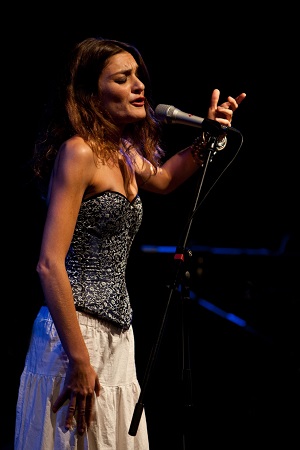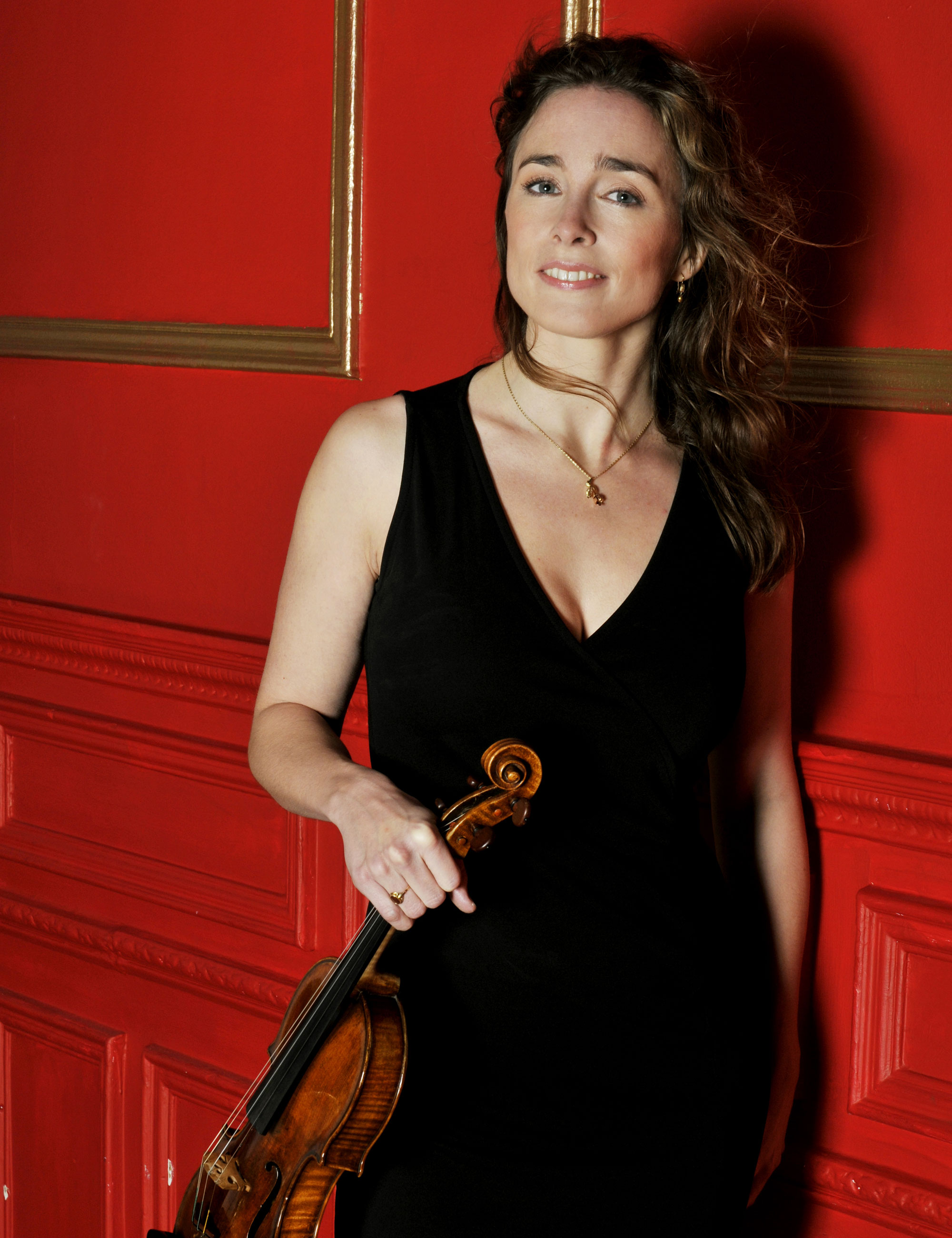Zavalloni, Saeijs, Britten Sinfonia, Rundell, Barbican | reviews, news & interviews
Zavalloni, Saeijs, Britten Sinfonia, Rundell, Barbican
Zavalloni, Saeijs, Britten Sinfonia, Rundell, Barbican
Subtle connections help frame fascinating portrait of the Dutch pioneer

The music of Louis Andriessen is instantly recognisable but frustratingly difficult to define. The American Minimalists are a strong influence, but so too is Stravinsky, and through him, Bach. Those figures provide the context for Andriessen’s works in the Barbican mini-festival M is for Man, Music and Mystery, which this Britten Sinfonia concert inaugurated.
The concert began by exploring a different direction of influence, from Andriessen to his pupil, the late Steve Martland. The two composers share a rhythmically propulsive approach to Minimalism, and a taste for bold, direct ideas that never quite go in the direction you expect. Tiger Dancing was commissioned by the Britten Sinfonia, so seemed a natural choice. It was written to be choreographed, and the spirit of the dance flows through its dynamic, supple textures and rhythmically incisive profile. Here, and throughout the evening, conductor Clark Rundell brought a natural flow to the music, keeping the tempos strict but without hectoring the phrases into metronomic regularity. The strings were fully in the spirit of the music, but their ensemble was often loose, something the clean, precise textures only served to highlight.
 Steve Reich’s The Desert Music was his magnum opus when he completed the score in 1983, and even in this later chamber version, it is still an imposing edifice – a continuous 50-minute span for chorus, string ensemble and incessant percussion. Again, Clark Rundell proved an ideal guide, maintaining strict tempos when required, giving all cues efficiently, and making every tempo change crisp and decisive. But again, the strings struggled to maintain unity of ensemble and intonation, and the amplification only highlighted what might otherwise have been less obvious slips. The chorus too where mercilessly scrutinised by the microphones, which only exacerbated otherwise minor problems of balance and tuning.
Steve Reich’s The Desert Music was his magnum opus when he completed the score in 1983, and even in this later chamber version, it is still an imposing edifice – a continuous 50-minute span for chorus, string ensemble and incessant percussion. Again, Clark Rundell proved an ideal guide, maintaining strict tempos when required, giving all cues efficiently, and making every tempo change crisp and decisive. But again, the strings struggled to maintain unity of ensemble and intonation, and the amplification only highlighted what might otherwise have been less obvious slips. The chorus too where mercilessly scrutinised by the microphones, which only exacerbated otherwise minor problems of balance and tuning.
Louis Andriessen’s La Passione was written in 2002 for one of the soloists who performed it here, mezzo Cristina Zavalloni (pictured above left, image by Barbara Rigon), while Frederieke Saeijs (pictured below) replaced the original violinist Monica Germino, who was indisposed. The work is a song cycle, setting poems by the Italian Symbolist/Futurist Dino Campana (1885-1932). Andriessen employs a typically eclectic ensemble, a string section made up only of violins, cimbalom, electric and bass guitars, a slightly more standard wind section, although featuring a prominent contrabass clarinet. Two pianos frame the ensemble, but although they seem to play throughout, are all but inaudible.
 The relationship between the two soloists is complex and fascinating. Andriessen describes the singer as the poet and the violin as his demon. They begin in unison, and later often converge to the same music. But at other times, the violin becomes an obbilgato (Andriessen concedes the passion title made connections to Bach all but inevitable). The ensemble tends towards the raucous, typically interjecting loud tuttis between the quieter solo phrases. And, typically for Andriessen, the textures tend to be based on fast runs in unison or octaves, the bass guitar and the (amplified) violin soloist running along at three or four octaves distance in continuous semiquavers a typical device.
The relationship between the two soloists is complex and fascinating. Andriessen describes the singer as the poet and the violin as his demon. They begin in unison, and later often converge to the same music. But at other times, the violin becomes an obbilgato (Andriessen concedes the passion title made connections to Bach all but inevitable). The ensemble tends towards the raucous, typically interjecting loud tuttis between the quieter solo phrases. And, typically for Andriessen, the textures tend to be based on fast runs in unison or octaves, the bass guitar and the (amplified) violin soloist running along at three or four octaves distance in continuous semiquavers a typical device.
Impressively, the two soloists performed from memory. Zavalloni had some tuning problems in the upper register, this again highlighted by the continuous unison and octave doublings. She is also distractingly mobile, acting out all her music and that of the players with spasmodic hand gestures. Saeijes was just as theatrical in her playing, if not her actions, with the amplification giving her tone a satisfyingly tactile edge. All round, a curious piece, surprisingly aggressive for a song cycle, but without overt dissonance. If the work failed to convince on its compositional merits, it was redeemed this evening by the passionate and compelling performances of its soloists.
rating
Explore topics
Share this article
The future of Arts Journalism
You can stop theartsdesk.com closing!
We urgently need financing to survive. Our fundraising drive has thus far raised £49,000 but we need to reach £100,000 or we will be forced to close. Please contribute here: https://gofund.me/c3f6033d
And if you can forward this information to anyone who might assist, we’d be grateful.

Subscribe to theartsdesk.com
Thank you for continuing to read our work on theartsdesk.com. For unlimited access to every article in its entirety, including our archive of more than 15,000 pieces, we're asking for £5 per month or £40 per year. We feel it's a very good deal, and hope you do too.
To take a subscription now simply click here.
And if you're looking for that extra gift for a friend or family member, why not treat them to a theartsdesk.com gift subscription?
more Classical music
 BBC Proms: McCarthy, Bournemouth SO, Wigglesworth review - spring-heeled variety
A Ravel concerto and a Walton symphony with depth but huge entertainment value
BBC Proms: McCarthy, Bournemouth SO, Wigglesworth review - spring-heeled variety
A Ravel concerto and a Walton symphony with depth but huge entertainment value
 BBC Proms: First Night, Batiashvili, BBCSO, Oramo review - glorious Vaughan Williams
Spirited festival opener is crowned with little-heard choral epic
BBC Proms: First Night, Batiashvili, BBCSO, Oramo review - glorious Vaughan Williams
Spirited festival opener is crowned with little-heard choral epic
 Interview: Quinteto Astor Piazzolla on playing in London and why Mick Jagger's a fan
Music Director Julián Vat and pianist Matias Feigin compare notes on Piazzolla
Interview: Quinteto Astor Piazzolla on playing in London and why Mick Jagger's a fan
Music Director Julián Vat and pianist Matias Feigin compare notes on Piazzolla
 Classical CDs: Bells, birdsong and braggadocio
British contemporary music, percussive piano concertos and a talented baritone sings Mozart
Classical CDs: Bells, birdsong and braggadocio
British contemporary music, percussive piano concertos and a talented baritone sings Mozart
 Siglo de Oro, Wigmore Hall review - electronic Lamentations and Trojan tragedy
Committed and intense performance of a newly-commissioned oratorio
Siglo de Oro, Wigmore Hall review - electronic Lamentations and Trojan tragedy
Committed and intense performance of a newly-commissioned oratorio
 Alfred Brendel 1931-2025 - a personal tribute
A master of feeling and intellect
Alfred Brendel 1931-2025 - a personal tribute
A master of feeling and intellect
 Aldeburgh Festival, Weekend 2 review - nine premieres, three young ensembles - and Allan Clayton
A solstice sunrise swim crowned the best of times at this phoenix of a festival
Aldeburgh Festival, Weekend 2 review - nine premieres, three young ensembles - and Allan Clayton
A solstice sunrise swim crowned the best of times at this phoenix of a festival
 RNCM International Diploma Artists, BBC Philharmonic, MediaCity, Salford review - spotting stars of tomorrow
Cream of the graduate crop from Manchester's Music College show what they can do
RNCM International Diploma Artists, BBC Philharmonic, MediaCity, Salford review - spotting stars of tomorrow
Cream of the graduate crop from Manchester's Music College show what they can do
 Classical CDs: Bells, whistles and bowing techniques
A great pianist's early recordings boxed up, plus classical string quartets, French piano trios and a big American symphony
Classical CDs: Bells, whistles and bowing techniques
A great pianist's early recordings boxed up, plus classical string quartets, French piano trios and a big American symphony

Add comment